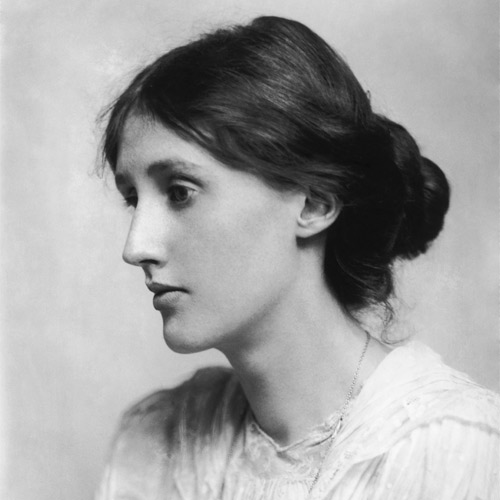The Life and Legacy of Virginia Woolf: A Comprehensive Exploration

Virginia Woolf stands as one of the most influential figures in 20th-century literature. Her innovative narrative techniques and profound exploration of the human psyche have left a lasting impact on both readers and writers alike. This article delves into the intricacies of Woolf's life, her literary career, and her enduring legacy.
Quick Overview of Virginia Woolf
| Full Name | Adeline Virginia Stephen |
|---|---|
| Date of Birth | January 25, 1882 |
| Age (as of 2024) | 142 years |
| Occupation(s) | Novelist, Essayist, Publisher |
| Nationality | British |
| Height | 5'7" (estimated) |
| Net Worth (2024) | N/A |
| Source of Wealth | Writing, Publishing |
| Parents | Leslie Stephen, Julia Prinsep Jackson |
| Marital Status | Married |
| Spouse | Leonard Woolf |
| Education | King’s College London |
| Known for | Modernist literature, "Mrs. Dalloway", "To the Lighthouse" |
| Major Awards | N/A |
Early Beginnings and Education
Adeline Virginia Stephen was born in London on January 25, 1882, into a well-educated and affluent family. Her father, Leslie Stephen, was an eminent historian, author, and mountaineer. Her mother, Julia Prinsep Jackson, had been a model for Pre-Raphaelite painters and a nurse. Virginia's early life was marked by intellectual stimulation but also by personal loss. She endured the deaths of her mother in 1895, her half-sister Stella in 1897, and her father in 1904, which led to severe bouts of depression and nervous breakdowns.
Despite these challenges, Woolf’s passion for literature flourished. She attended King’s College London, where she studied classics and history, and was exposed to the burgeoning feminist movement. These experiences significantly shaped her intellectual and literary development.
Literary Career: From Beginnings to Breakthrough
Initial Forays into Writing
Virginia Woolf began her writing career with journalistic pieces and reviews for various magazines. Her first novel, "The Voyage Out," was published in 1915 and introduced her innovative narrative style. This work was followed by "Night and Day" in 1919, which further established her as a significant literary talent.
Achieving Literary Prowess
Woolf’s major breakthrough came with the publication of "Mrs. Dalloway" in 1925. This novel employed a stream-of-consciousness technique to delve deeply into the minds of its characters, capturing the intricacies of their thoughts and emotions. It was followed by "To the Lighthouse" in 1927, which is considered one of her masterpieces for its exploration of time, memory, and familial relationships.
Other notable works include "Orlando" (1928), a whimsical biography that spans centuries and challenges traditional gender roles, and "The Waves" (1931), a poetic and experimental novel that captures the essence of human consciousness.
Recent Developments and Legacy
Though Virginia Woolf’s life was tragically cut short in 1941, her works continue to be celebrated and studied. The themes she explored, such as mental illness, feminism, and the complexities of social structures, remain relevant and influential. Institutions and literary societies around the world continue to honor her contributions through conferences, publications, and adaptations of her works.
Financial Overview: Woolf's Wealth and Investments
Virginia Woolf's primary sources of income were her novels, essays, and the publishing house she co-founded with her husband, Leonard Woolf, the Hogarth Press. The press published many of her works as well as those of other significant writers, including T.S. Eliot and Sigmund Freud. While precise figures of her net worth are not available, her influence and success in the literary world were significant.
Key Financial Achievements
- Hogarth Press: Established in 1917, it played a critical role in Woolf’s financial independence and literary control.
- Book Sales: The continuous sales of her novels and essays have ensured her literary estate remains valuable.
Personal Life: Relationships and Public Perception
Marital and Personal Relationships
Virginia married Leonard Woolf in 1912, and their partnership was both personal and professional. Leonard was a supportive and stabilizing force in her life, especially during her frequent bouts of mental illness. Woolf also had a significant romantic relationship with Vita Sackville-West, a fellow writer, which influenced her work, particularly "Orlando."
Media Perception and Public Image
Woolf was a prominent member of the Bloomsbury Group, a collective of writers, artists, and intellectuals who were known for their progressive views on art, politics, and society. Her public image was that of a pioneering modernist and a profound thinker. However, she was also subject to scrutiny due to her mental health struggles and her sometimes contentious relationships with other writers, such as her noted jealousy of James Joyce.
Enduring Influence: Woolf's Lasting Impact
Virginia Woolf's contributions to literature extend beyond her novels. Her essays, such as "A Room of One's Own" (1929), which argues for both a literal and figurative space for women writers, have become seminal texts in feminist literature. Her innovative narrative techniques and deep psychological insights have paved the way for countless writers and have cemented her status as a literary icon.
Frequently Asked Questions
What were Virginia Woolf's most famous works?
Virginia Woolf is best known for "Mrs. Dalloway," "To the Lighthouse," and "Orlando."
How did Virginia Woolf die?
Woolf died by drowning herself in the River Ouse in 1941, after a lifelong struggle with mental illness.
What was the Bloomsbury Group?
The Bloomsbury Group was a collective of English writers, intellectuals, philosophers, and artists who were influential in the early 20th century.
Did Virginia Woolf have any children?
No, Virginia Woolf did not have any children.
What themes did Woolf explore in her writing?
Woolf’s work often explored themes such as mental illness, feminism, the passage of time, and the complexities of human relationships.
In summary, Virginia Woolf's life and work continue to resonate profoundly within the literary world. Her innovative approaches and exploration of complex themes make her a timeless and essential figure in modern literature.